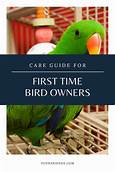How to Make Your Pet a Service Dog
Service animals can provide invaluable assistance to people with disabilities, performing tasks that help them live more independently. If you're considering training your pet to become a service animal, there are a few things you need to know.

Choosing the Right Pet
Not every pet is cut out to be a service animal. The best candidates are dogs that are:
- Intelligent and trainable
- Friendly and gentle
- Calm and well-behaved in public
- Healthy and strong
Some breeds that are commonly used as service animals include golden retrievers, Labrador retrievers, and poodles. However, any breed of dog can be trained to become a service animal, as long as it has the right temperament and physical ability.
Training Your Pet
Once you've chosen a pet that you think has the potential to be a service animal, you'll need to start training it. This process can take anywhere from six months to two years, depending on the individual dog's learning ability and the complexity of the tasks you want it to perform.
There are a number of different ways to train a service animal. You can work with a professional dog trainer, or you can train your pet yourself using books, DVDs, or online resources.
Regardless of the method you choose, it's important to be patient and consistent with your training. Service dogs need to be able to respond reliably to commands in a variety of situations, so it's important to make sure that they understand what you're asking them to do and that they're willing to cooperate.
Testing and Certification
Once your pet has completed its training, you'll need to have it tested and certified by a qualified professional. This process typically involves a series of evaluations to assess the dog's skills and temperament. If your pet passes the test, you'll be issued a certificate that designates it as a service animal.
Using Your Service Dog
Once your pet is certified as a service animal, you can start using it to help you with your disability. Service animals are allowed to accompany their handlers in public places, including restaurants, stores, and airplanes. They can also be used to perform tasks such as retrieving objects, opening doors, and providing emotional support.
Having a service animal can make a big difference in the life of a person with a disability. These animals provide companionship, independence, and a sense of security. If you're thinking about getting a service animal, do your research and make sure that you're prepared to commit to the time and effort that it takes to train and care for one.
Declaration: All article resources on this website, unless otherwise specified or labeled, are collected from online resources. If the content on this website infringes on the legitimate rights and interests of the original author, you can contact this website to delete it.




